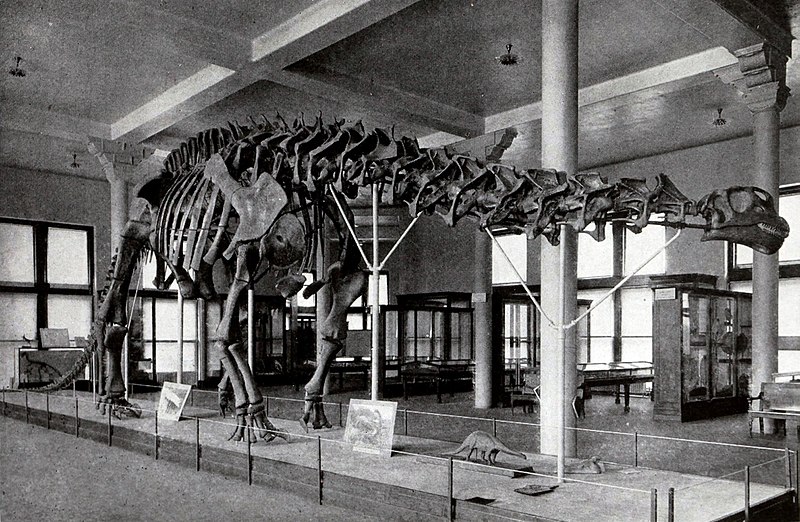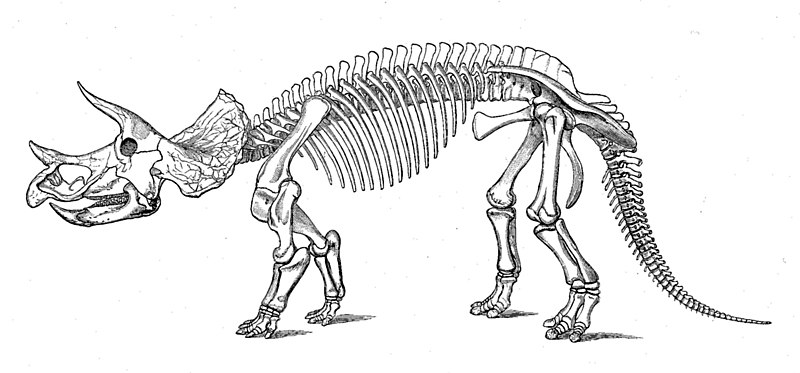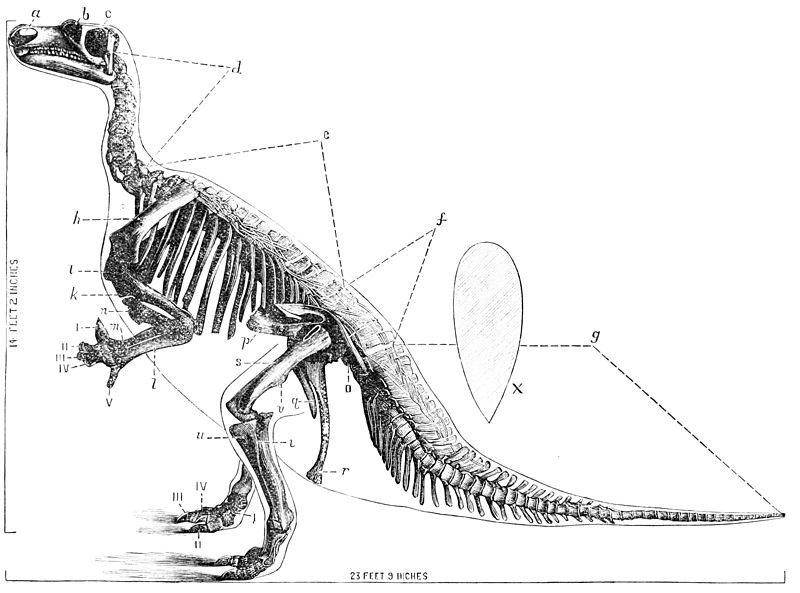Well, the year's already
flying, yet it feels as if it's just begun! Isn't that strange?
Things are going pretty well with our Easter drama, “The King on a
Cross” – we had our first dress rehearsal last Sunday. It's
surprising how much of an impact costumes make (and after spending
several hours in my costume, it sure felt like I'd visited the Holy
Lands, man that thing makes me hot!). I can't wait for the night of
the drama and the second performance on the day after (contact me
using the email address at the bottom of this blog post for specific
details).
With the update on the play
out of the way, let's get started with our “usuals” before we
dive into the second part of my three-part series on the “Dinosaur
Renaissance”.
Days Till
It is:
10 days till Palm Sunday
It is:
14 days till the Friday night performance of “The King on a Cross”
It is:
18 days till Easter Sunday
In the Spotlight
This
week we've got a good dose of news concerning the fourth film
in the Jurassic Park series,
Jurassic World! Just
last week, I showed you all some pictures of some JW
concept art for the movie's Visitor Center. This week, I've uploaded
some photographs recently taken of the helipad that's going to appear
in the film! Here they are:
It's not much too look at yet, as it's still unfinished, but one can just imagine the type of
scenes that might take place here; this location would look fantastic
with some hadrosaurs and sauropods in the background, or maybe near
the end of the movie the film's heroes must escape a pack of raptors
or tyrannosaurs by reaching the helicopter in time. Who knows?
Also in other news, Irrfan Khan – who is playing Patel, the owner
of the new theme park – has revealed his upcoming filming schedule
is anything but not-busy. He described his schedule in a recent
interview with Bollywood Hungama. Here's what he had to say:
"It's a brief schedule to begin with, though my role is anything but brief. At the moment all I can tell you on record is that it's a pivotal role. I am very excited about the project. It's the second American global franchise after Spiderman that I am part of . . . After the first brief first schedule of Jurassic World, I'll be back in India to shoot for Shoojit Sircar's Piku. I'll complete one long schedule of Piku and then return to the US for a long schedule of Jurassic World. So it'd continue for the rest of the remaining part of the year."
It has been suggested by some fans that his role will be similar to
the one that of John Hammond in the first film, mainly trying to stay out of
harm's way while Chris Pratt's and Bryce Dallas Howard's character
will be trying to fight for their lives!
The
last bit of JW news is
about one of the young actors named Ty Simpkins. As you might recall,
we've known about him being in this film for quite some time, but it
was only just revealed that his character name is going to be “Gray”
(exactly what he does in the film is unknown at this point). By the
way, Simpkins has just arrived in Hawaii to do some film shooting! I
can't wait to see the finished project! Every bit of JW
news only gets me more and more excited. As you guys might or might not already know, they start filming next week! Finally, after 13 years of pre-production, Jurassic World is heading to the production stage of the process!
Topic of the Week by
Christian Ryan
Two weeks ago, we looked at how early discoveries of dinosaurs
changed rapidly as we made more and more fossil finds. Now moving on
into the 1870's, scientists were becoming very interested with
the “terrible lizards”. And also during this time, more dinosaurs
were being discovered not in Europe where the first findings took
place, but in the United States – particularly in the western states.
It is now that we reach one of the greatest “dinosaur revolutions”
in history, and it all started with two important men: Othniel
Charles Marsh and Edward Drinker Cope. These two scientists were very
different, but were drawn together (and later apart) by the same goal – the desire to discover classify
more dinosaurs! Marsh was an American paleontologist born in 1831 in
Lockport, New York. Cope was also an American paleontologist and he
was born in 1840 in Philadelphia, Pennsylvannia.
 |
| Othniel Charles Marsh (left) and Edward Drinker Cope (right) were both American paleontologists with a great interest in dinosaurs . . . and this would eventually drive them both nuts! |
Now, at first, these scientists, who were friends at the time after
they met in Berlin in 1864, set out toward the western portion of the
United States to find more species of dinosaurs. When they did find
some new species, they even named some of the species after each
other. But that's when trouble started brewing – the two scientists
went to Cope's marl pit in New Jersey (where the first Hadrosaurus
was found) and the moment when Cope turned his back, Marsh had the
fossils being dug up diverted to him instead of Cope. From then
on, it got from bad to worse; the two men turned from friends to
enemies and by 1877, the Bone Wars (or “Great Dinosaur Rush”) had
begun!
 |
| This is a sketch Marsh drew of a dinosaur he discovered called Claosaurus. This image clearly represents how scientists viewed dinosaurs at the time, notice the creature's tripod body posture. |
The two scientists were determined to find and classify more fossils
of extinct animals than the other; they were so desperate, that they
even used spies to scope out the other's dig sites, planted fake
bones in their opponents digging area, stole and even sometimes
destroyed the other's fossils! Talk about Bone Wars! Most of
the places Cope and Marsh were digging were in the states of
Colorado, Nebraska and Wyoming, and here the two scientists found
many new dinosaur species and helped early scientists of the
time to learn more about the incredible beasts they were uncovering.
The Bone Wars finally met its end in 1892 when Marsh and Cope were
both financially ruined and could no longer continue their feud
(partly because of Cope's death). But it was thanks to the efforts of
these scientists that 142 new species of dinosaurs were discovered!
Now scientists had even more fossils to work with.
But despite the fact that the two scientists were discovering more
fossils, they still made a few mistakes with their reconstructions.
When Cope discovered a marine reptile known as Elasmosaurus,
he reconstructed the beast as a sea creature with a short neck that
propelled itself through the water with a long tail. But Cope noticed
that the fossils didn't fit very well together, so he had Professor
Joseph Leidy take a look at it and he found the problem – Cope had
placed Elasmosaurus' head on its tail and vise versa! This creature in
reality was a long-necked marine reptile with a short tail.
Leidy then had a scientific paper about Cope's mistake published and
Cope – based on his next course of action – must have been
terribly embarrassed. So to avoid being disgraced, Cope bought ever
one of the papers Leidy published he could find to avoid anyone else
knowing about his mistake.
 |
| When initially reconstructed, Cope accidentally placed the neck bones of Elasmosaurus where the creature's tail should have gone! |
 |
| It turned out that Elasmosaurus had a long neck and a short tail, and not the other way around. |
A popular myth is that it was Marsh who
pointed out Cope's error and published his input on it, but the truth
was that Marsh apparently liked the story of his enemy making a
mistake and 20 years later, Marsh claimed that he was the one
who pointed out Cope's error. However, if you ask me, Marsh made an
even more serious mistake.
Among the creatures Marsh discovered was the famous brontosaurus, but he overlooked a tiny problem – when he found the original
specimen of “brontosaurus”, it was without a head, so he placed
the skull of another specimen found nearby on it to complete it.
Little did he know that the skeleton and the skull were of two very
different species: the skull was of a Camarasaurus and the
skeleton from an Apatosaurus! It wasn't until the 1900's that scientists found out that brontosaurus never
existed; to this day, the general public is still oblivious
to this fact. That's why I think Marsh made a worse mistake than
Cope, because Cope's error was pretty much forgotten soon after it
happened.
 |
| This is the original reconstructed skeleton of Apatosaurus, aka "brontosaurus", with a Camarasaurus skull. |
 |
| In reality, Apatosaurus had a more elongated skull, similar to its relative Diplodocus |
But our two paleontologists didn't only make fumbles in the Bone Wars. During the Bone Wars, Marsh and Cope discovered numerous fossils of
what would become one of the most famous carnivorous dinosaurs ever
(at least to dinosaur enthusiasts): Allosaurus fragilis, a
ferocious theropod dinosaur with a crested head. Now we were able to
paint a better picture of how dinosaurs looked and behaved. From the
late 1800's onward, scientists knew that many dinosaurs walked on two
legs instead of four, though two-legged dinosaurs were still portrayed as walking and standing in the tripod position. Carnivores such as Allosaurus were
depicted walked with their heads held high up in the air and their
tails dragging along the ground.
 |
| Allosaurus was one of the many dinosaurs discovered during the Bone Wars. |
But that's not the only dinosaur
discovered in this era – new dinosaur species making their
appearance included Coelophysis, Stegosaurs,
Camarasaurus, Triceratops, Apatosaurus,
Diplodicus, Ceratosaurus, Camptosaurus,
Barosaurus, Torosaurus, Laosaurus, Dryosaurus,
Drinker, Othnielia (I wonder who that dinosaur was
named after . . .), Labrosaurus among many others.
 |
| Triceratops, another Bone Wars discovery, was originally thought by Marsh to be an extinct species of Bison and initially called it Bison alticornis! |
After the Bone Wars were over, scientists continued to find more new
species of dinosaurs; the year was 1902 when the most famous dinosaur of all
was discovered by Barnum Brown in the Hell Creek Formation – he
discovered "The Tyrant Lizard King": Tyrannosaurus rex! At the time, T. rex was thought
to be the largest carnivorous dinosaur ever to exist, easily
overshadowing the other large carnivore known at the time,
Allosaurus.
This leads us to another key figure in how dinosaurs have been
portrayed over the years: Charles Knight. Charles, who lived
from1874-1953, was an American artist who painted beautiful
recreations of many extinct creatures – including dinosaurs. Though
most of his pictures of dinosaurs and other extinct reptiles are
considered inaccurate today, they are a vivid reminder of what we
used to think these creatures were like.
 |
| Here is a portrait by Charles Knight of a pair of hadrosaurs. |
 |
| Charles Knight modeling a Stegosaurus. |
.jpg/800px-Page_59_(The_Lost_World._1912).jpg) |
| The relatively small brain of Stegosaurus (inaccurately depicted here with the wrong dorsal plate and tail spike arrangement) gave rise to the false idea that all dinosaurs were dimwitted. |
The “terrible lizards” were also thought to be quite sluggish and
cold-blooded, having to bask in the sun to raise their body
temperatures. Carnivores such as Tyrannosaurus and Allosaurus
were believed to have a tripod posture; they were thought to walk with their heads held high and their tails
dragging along the ground (at the time, there wasn't much difference
between T. rex and Allosaurus other than size). In fact,
that's how pretty much all bipedal dinosaurs – including
hadrosaurs and the Iguanodon we learned about in part 1 –
were pictured.
Four-legged herbivores were also thought to let their
tails drag on the ground, and many were even thought to have been at
least semi-aquatic. Take the sauropods, or long-necked dinosaurs, for
example; here were dinosaurs that were much larger than anything
walking the land today. Sauropods, like Apatosaurus,
Brachiosaurus, Camarasaurus, and Diplodocus could
weigh anywhere from 30-50 tons (and back in before the Dinosaur
Renaissance, most weight estimates for sauropods went much higher)
and were imagined as lumbering and lazy behemoths that were so heavy,
that they couldn't support their weight on land. Scientists of the
time thought that these dinosaurs must have lived in swamps to
support their weight. Creatures such as hadrosaurs were also believed
to live in swamps.
 |
| Iguanodon was portrayed as a dinosaur that walked in a tripod posture for much of the 20th century. |
 |
| These Tyrannosaurus rex are inaccurately posed in a tripod posture and they have three fingers; today we know they only had two. |
 |
| Sauropods like "brontosaurus" were once thought to spend their lives wallowing in swamps. |
Even still, the general public was falling deeply in love with
dinosaurs. By the early 1900's, dinosaurs were quite popular and
started making their appearance in movies and books. The first dinosaur ever to appear in cinema was Gertie the Dinosaur, who made her theatrical debut in 1914. The Lost
World by Connon Doyle, published in 1911, and the movie based on
the book with the same name that was released in 1925 were instant
hits. The views of dinosaurs as slow, poorly evolved, dimwitted
brutes and creatures destined for extinction were prevalent by this
point, even up into the 1940's and 50's. And it stayed that way . . . up until the 1960's, that is!
In the final part of this series, we'll explore how our view of
dinosaurs changed with the coming of the Dinosaur Renaissance and
learn just what they mean to us in the 21st century. We'll learn how the Dinosaur Renaissance first began!
PS 1: To post a comment
(this is highly encouraged), please simply click the post you wish to
comment on, scroll to the bottom of the page and put what you wish to
say or ask in the comment box. Then in the box below the comment box
choose who you’re going to comment as. And then click preview
or publish. If you aren’t signed into Google, you’ll be
asked to type in a word and a number in the space provided. Type the
word, put a space and then put the number. Then your comment is on
the blog!
PS 2: Have a puzzling question about
animals (including dinosaurs), myself, my latest book, my stop-motion
movies, Creation or etc? Please post your question as a comment or
send me an email at animaladventures@aol.com.
PS 3: What’s the new in the news?
Check it out at SMILEY’S
NEWS.



No comments:
Post a Comment